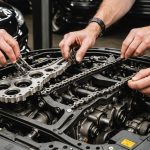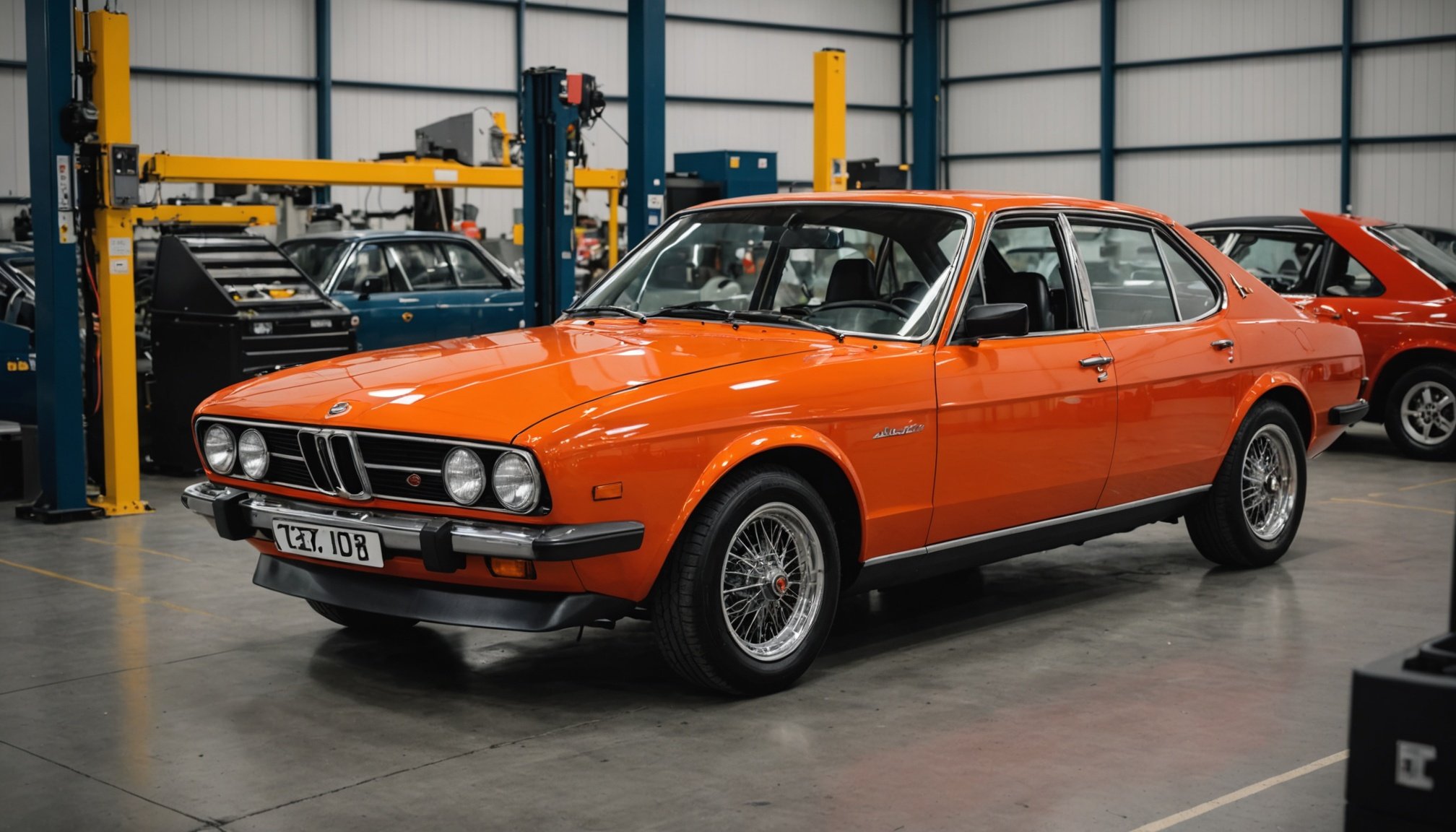Understanding UK Regulations for Classic Car Upgrades
Navigating the UK regulations for upgrading classic cars involves several key aspects. First, it’s crucial to grasp the relevant legislation governing modifications to these treasured vehicles. The UK has specific laws to ensure modifications not only preserve the vehicle’s classic nature but also meet modern safety standards.
To ensure compliance, any classic car upgrades must adhere to certain safety criteria. This can involve updating seat belts, brakes, and lighting systems. An important aspect is to ensure that modifications do not compromise the structural integrity of the vehicle.
In parallel : Top Electric Cars Perfect for Long-Distance Commuting in the UK: Your Ultimate Guide
Another significant consideration is taxation and emissions compliance. Classic vehicles often enjoy tax privileges, but it is essential to keep modifications within legal limits to maintain these benefits. For emissions, even tailored upgrades need to comply with current environmental standards.
When planning any upgrade, it’s best to:
Have you seen this : Key Factors to Weigh When Upgrading Your Classic Car to a Hybrid System in the UK
- Consult with professionals who specialise in classic cars.
- Reference official documents on upgrading laws.
- Consider restoration services that focus on maintaining authenticity while ensuring compliance.
By following this approach, your classic vehicle can stay true to its heritage while successfully navigating the complex landscape of UK regulation compliance.
Assessing Your Classic Car’s Potential for Modern Upgrades
Understanding upgrade potential in classic cars requires a detailed assessment of the vehicle’s condition. This involves evaluating both the aesthetic and mechanical aspects to ensure modifications are not only feasible but beneficial. Start by identifying the current state of the car. Examine the engine’s performance, the integrity of the body and frame, and the condition of the interior. These factors provide a foundation for determining what upgrades are practical and advisable.
Evaluating Vehicle Condition
A thorough vehicle condition check can highlight areas for improvement. For instance, upgrading the suspension or braking system may enhance performance significantly. Additionally, technology-driven enhancements like modern infotainment systems or improved lighting could be considered, provided they do not compromise the classic feel of the car.
Balancing Aesthetics and Functionality
When planning upgrades, it’s crucial to balance functionality with the car’s original aesthetic. Changes should harmonise with the car’s historical value. Choices such as paint colour, interior materials, and external fixtures should reflect the car’s era while integrating modern advancements. This approach not only elevates performance but also preserves the unique charm that classic cars inherently possess, ensuring a seamless blend of old-world elegance and modern convenience.
Popular Modern Technology Upgrades for Classic Cars
Bringing modern upgrades to classic cars is an exciting way to enjoy the best of both worlds: vintage charm combined with cutting-edge technology. These enhancements allow you to drive a classic car with improved performance, safety, and connectivity.
Performance Enhancements
A classic car’s heart transforms significantly with engine swaps and improvements. By replacing or upgrading engines, enthusiasts can achieve increased horsepower and efficiency. Upgrading transmission systems is another vital modern upgrade, offering smoother gear shifts and better reliability. An enhanced suspension ensures better handling, turning each drive into a silky ride. These classic car features, though nostalgic, gain a comprehensive upgrade with modern technology integration, enhancing both performance and longevity of the vehicle.
Safety Features
Incorporating advanced safety features in classic cars is no longer optional. The installation of modern braking systems, such as anti-lock brakes, significantly improves stopping power. Enhanced lighting solutions provide better visibility and safety, especially in low-light conditions. Additionally, safety electronics, like airbags and traction control, play an essential role in preventing accidents and ensuring passenger protection.
Connectivity and Comfort
Connectivity takes a new level with modern audio and infotainment systems in classic cars. GPS and navigation technologies guide the way, ensuring you never lose direction. Incorporating climate control systems keeps the interior comfortable, making every journey a pleasure.
Step-by-Step Guide to Specific Upgrades
Transform your vehicle with this comprehensive upgrade guide that’s designed to keep things straightforward and practical. Upgrade your car’s engine, brakes, and infotainment systems with confidence by following these step-by-step instructions.
Engine Upgrade Process
A successful engine upgrade starts with selecting the right engine for replacement, focusing on compatibility and performance needs. Ensure you choose an engine that fits your car’s model specifications and offers the desired power boost.
The step-by-step installation includes:
- Preparation: Gather necessary tools, including socket sets and hoists.
- Safety first: Disconnect the battery and drain fluids.
- Old engine removal: Unbolt and carefully lift out.
- New engine installation: Align carefully, and secure bolts.
- Connect: Reattach wires and hoses.
- Refill fluids and reconnect the battery.
Safety precautions are paramount. Ensure your workspace is clear, use proper safety gear like gloves and goggles, and double-check connections to avoid hazards.
Modern Brake System Installation
Modernising your car’s brake system involves an understanding of cutting-edge technologies like anti-lock brakes and electronic brake sensors. Installing these involves careful fixing and calibration to ensure optimal performance.
Installation steps:
- Prepare tools such as brake line wrenches.
- Remove existing brakes carefully.
- Install new components and ensure proper alignment.
Sourcing Parts and Professionals
Navigating the world of classic car parts and sourcing professionals can enhance both the value and performance of your treasured vehicle. Starting with reputable suppliers, online platforms like Hemmings and Classic Industries offer a range of components, ensuring that hard-to-find parts are easily accessible. eBay Motors also presents an array of listings from vintage steering wheels to rare engine blocks.
Finding the right professionals for complex upgrades is crucial for ensuring quality work. Mechanics who specialize in classic or vintage models bring valuable expertise to the table. Connecting with local car clubs can be beneficial in discovering trustworthy professionals through member recommendations.
When planning upgrades, it’s essential to evaluate costs meticulously. Budgeting for both parts and labour helps manage expectations and avoid unforeseen expenses. Consider sourcing from both domestic and international suppliers to find more competitive pricing. It’s also wise to compare quotes from different professionals for labour.
In summary, investing time in sourcing the best parts and knowledgeable professionals ensures that your classic car remains in prime condition, enhancing its charm and longevity. This thoughtful approach will undoubtedly reward you with a seamless and satisfying upgrade experience.
Case Studies of Successful Classic Car Upgrades
Investigating upgrade case studies provides valuable insights into the successful transformation of classic cars. One notable success story involved a 1960s Jaguar E-Type, which underwent a sleek conversion to accommodate an electric powertrain. This upgrade not only enhanced the vehicle’s performance but also preserved the car’s iconic exterior.
Modifications adhering to UK regulations ensure these transformations are both innovative and legal. A Land Rover Defender case highlighted the installation of modern suspension systems and braking technology, blending cutting-edge features with classic appeal. Such adaptations maintain compliance while significantly improving safety and handling.
Real-life performance enhancements in upgraded vehicles focus on both power and efficiency. For instance, upgrading a Chevrolet Camaro with a turbocharged engine resulted in significant horsepower gains, offering improved acceleration and driving dynamics. This transformation illustrates how enthusiasts can achieve exhilarating motorsport-like experiences in a classic model.
Studying classic car transformations reveals a compelling balance between preserving tradition and embracing modern technology. By analyzing these noteworthy success stories, car enthusiasts and owners can appreciate the tangible benefits of well-executed upgrades, from enhanced performance to increased vehicle longevity. Each classic car transformation tells a unique tale of innovation, skillfully merging the old and the new.
Maintaining Your Upgraded Classic Car
Ensuring proper car maintenance is crucial for the longevity of both the classic and upgraded systems in your vintage car. To keep your vehicle in top condition, it is important to perform regular routine checks.
When dealing with an upgraded classic car care routine, pay attention to both the classic elements and any modern upgrades. For the classic components, regular checks and maintenance, such as oil changes, brake inspections, and tune-ups, are imperative. For modern upgrades like electronic fuel injection or enhanced suspension systems, it is vital to follow updated maintenance schedules as recommended by the upgrade manufacturers.
Staying informed about regulatory changes is equally important to ensure compliance. Environmental standards and safety regulations evolve, and your upgraded classic must meet these new requirements. Regularly check local and federal guidelines to avoid penalties and ensure your vehicle is road-legal.
Maintaining a balance between honoring the integrity of vintage components while integrating contemporary updates can be challenging. However, careful attention to both areas will help preserve your classic car’s charm and functionality. Embrace a proactive approach to car maintenance, as it fosters your automobile’s performance and enhances its longevity.










